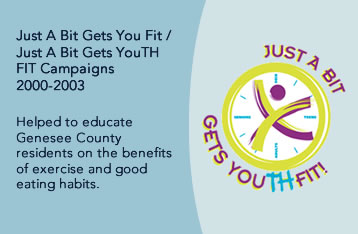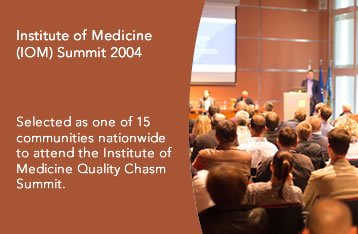The Nursing Task Force was charged with raising the consciousness of the
Coalition concerning nursing issues: retention, recruitment & advanced education, and ensured nursing input in Coalition activities. Outcome options of the Task Force included: develop a program for the recruitment of individuals into the nursing field; enhance the advanced education of nurses in Genesee County; reduce the turnover rate of nurses within Genesee County; and ensure nursing input into Coalition activities.
Nursing Task Force
https://gfhc.org/wp-content/uploads/2015/07/baby5.jpg
Mid-Michigan Guidelines Applied in Practice (GAP) – Heart Failure 2003-2007
https://gfhc.org/wp-content/uploads/2015/07/baby6.jpg
Following the success of the AMI-GAP model, the Coalition launched a new GAP initiative to improve the care of patients with heart failure, reduce their risk of death, and lower re-admission to the hospital in nine Mid-Michigan hospitals. Undertaken in conjunction with the American College of Cardiology (ACC) and funded by pharmaceutical companies and the Blue Cross Blue Shield Foundation of Michigan, the new initiative was designed to facilitate inpatient compliance with ACC/American Heart Association (AHA) Guidelines for Heart Failure and patient transfer to a primary care physician.
Like the AMI-GAP project, the initiative made use of a toolkit that included ACC-endorsed standing orders, critical pathways, and a discharge checklist. Physician-nurse teams trained in guideline implementation worked with doctors and hospital staff to disseminate proven methods for implementing ACC/AHA guidelines.
Listed below are the nine hospitals across mid-Michigan that participated as intervention hospitals in this guideline adherence initiative:Mid-Michigan Guidelines Applied in Practice (GAP) – Heart Failure
- Bay Regional Medical Center
- Genesys Health System
- Hurley Medical Center
- Ingham Regional Medical Center
- Lapeer Regional Medical Center
- McLaren Regional Medical Center
- Memorial Healthcare
- Mid-Michigan Medical Center
- Saint Mary’s Health System
The project generated significant findings and resulted in valuable quality-improvement protocols that remain active in participant hospitals. The initiative brought a 22% reduction in 30-day readmission rates and a 27% reduction in 30-day mortality rates for heart failure patients in participating hospitals, as compared to controls.
The observed quality improvements—demonstrated in a non-academic, community hospital setting—represent important steps in quality care. What’s more, both AMI-GAP and GAP Heart Failure have been successfully replicated in several states, as well as other countries, and generated interest from major funders of health-related programs. In 2007, the Coalition reconvened the Cardiac Task Force to address methods of sustaining the project’s positive interventions.
MIChild / Healthy Kids 1998-2003
https://gfhc.org/wp-content/uploads/2015/07/baby7.jpg
Created by the State of Michigan as part of the federal government’s State
Children’s Health Insurance Program (SCHIP), MIChild and Healthy Kids are designed to provide health benefits to children from birth through 19 years of age. MIChild is funded by the State and administered by private health plans, while Healthy Kids is an expansion of Medicaid. Under the programs, expectant women who qualify receive mental health and substance abuse services, prenatal care, and delivery services. Children get preventive health services such as regular checkups, emergency care, dental care, shots, pharmaceuticals, hospital care, and vision and hearing screening.
As the official Genesee County outreach agent for MIChild and Healthy Kids, the Coalition enrolled over 18,000 children in the two programs, allowing more of our area’s youngsters access to regular health care.
Just A Bit Gets You Fit / Just A Bit Gets YouTH FIT Campaigns 2000 – 2003
https://gfhc.org/wp-content/uploads/2015/07/pasttprogs_JBGYF.jpg
In 2000, more than half of Genesee County residents were inactive—contributing to a higher incidence of obesity, high blood pressure, cardiovascular disease, and high cholesterol. That year, the Coalition’s Health Improvement Committee launched the Just A Bit Gets You Fit campaign in an effort to encourage physically inactive members of the community to exercise.
With support from local media, community-based organizations, government, employers, health insurers, and healthcare providers, the campaign increased awareness and physical activity. It also captured statewide attention and went on to receive the Governor’s Council on Physical Fitness, Health and Sports “Educational Materials of the Year” Award before being adopted by other communities throughout the United States.
Health organizations in Anderson, Indiana; Kokomo, Indiana; Nashville, Tennessee; Kenosha, Wisconsin; and Kansas City, Missouri used the Just a Bit Gets You Fit slogan for similar campaigns in their cities—and Detroit, Michigan, used the model for its Motown in Motion fitness campaign.
The success of Just a Bit Gets You Fit spurred the Coalition and Mott Children’s Health Center to broaden the audience and launch Just a Bit Gets YOUth Fit, targeted to area young people. Through further funding from Mott Children’s Health Center, the campaign was extended to include information on good eating habits with the slogan of “Eat Good. Feel Good. Look Good.”
All three campaigns were well received within the community, helping to educate Genesee County residents on the benefits of exercise and good eating habits. Data collected by local health organizations and the Prevention Research Center of Michigan for 1998 – 2007 show the number of people reporting they exercise four or more times per week in the Flint Community increased from 28.8% to 35.5%.
Despite those encouraging statistics, the most recent 2007 data reveal some backsliding in the level of physical activity since 2003. That regression—along with the persistent incidence of chronic disease in the community—led the Coalition to make health status its overarching concern.
Join Together! / Demand Treatment! 2002-2007
https://gfhc.org/wp-content/uploads/2015/07/baby24.jpg
In 2002, the Coalition’s Mental Health and Substance Use Task Force was selected to partner with Join Together, a national resource for communities taking action against substance use, for their DEMAND TREATMENT! Initiative.
The Initiative’s mission was to increase the number of people who received treatment for substance abuse and dependency problems. The Coalition received a $60,000 grant and technical support from Join Together to expand continuing education programs that teach screening, intervention, and referral techniques to area physicians, human service providers, and patient advocates.
A significant component of the DEMAND TREATMENT! Initiative in Genesee County was the support of Greater Flint Project Vox, a program designed to give a greater voice to people who are alcohol or drug dependent through special projects such as Soberfest and Recovery Walk. Thanks to help from DEMAND TREATMENT!, the group was able to take its program to the next level by developing its organizational structure and preparing a strategic plan.
Although the DEMAND TREATMENT! Program formally concluded in 2007, Project VOX continues. Changes in our area’s screening and referral protocols, as well as heightened awareness of the long-lasting health impact of alcohol and substance abuse, will yield benefits for our community well into the future.
Institute of Medicine (IOM) Summit 2004
https://gfhc.org/wp-content/uploads/2015/07/baby23.jpg
In 2004, the Coalition was selected as one of fifteen communities nationwide to
attend the Institute of Medicine Quality Chasm Summit entitled “Crossing the Quality Chasm: Redesigning Care and Improving Health in Priority Areas.”
The GFHC was recognized for implementing systems interventions in heart failure—one of the summit’s priority issues. Participating groups shared the lessons they learned with national leaders, covering a variety of healthcare areas—from depression and asthma, to diabetes and pain control.
Of the 90 communities that were invited to attend the summit, 45 were self-nominated; and of those, just 15 were selected. Of those 15 communities, only Flint and Rochester, New York, had multi-functional coalitions addressing a broad range of interventions. Notably, the current Coalition President and CEO, Stephen Skorcz, was formerly the President of the Rochester Area Health Corporation.
The Coalition was truly honored to be one of the few organizations nationwide recognized for its excellence in health systems interventions. As a result of the conference, the Coalition was contacted by United States Senator Joe Lieberman’s (ID-CT) office to learn how communities such as Flint monitor quality, involve providers of health care, and focus on racial disparities.
HbA1c 2000-2003
https://gfhc.org/wp-content/uploads/2015/07/baby9.jpg
To manage diabetes, glucose must be kept at a near normal level. For a comprehensive picture on blood sugar levels, a glycated hemoglobin lab test called HbA1c is required. This blood test determines the average glucose level over a three-month period, giving a more accurate picture than an at-home finger-stick test. It’s recommended that diabetics have the HbA1c test performed twice every year.
In 2000, the Coalition’s Diabetes Task Force became concerned over this issue because 40% of commercially insured diabetes patients in Genesee County had not received an HbA1c test.
The Task Force embarked on a campaign to increase awareness of the test and set a goal that all diabetic patients should have had at least one test in the past year. Targeting the African American community, the outreach campaign included articles in newspapers, meetings with the media, and events at local area churches. Physicians received diabetes information, HbA1c patient education order forms, and Continuing Medical Education (CME) training sessions.
The campaign’s results were very promising. According to statistics from HealthPlus of Michigan and Blue Cross and Blue Shield of Michigan, HbA1c testing had increased plan-wide from 67.9% in 2001 to 76.8% in 2003, while monitoring for kidney disease had increased from 23.8% in 2001 to 32.4% in 2003.
Genesee Health Plan (Founded in 2001)
https://gfhc.org/wp-content/uploads/2015/07/pasttprogs_GHP.jpg
In October of 2001, the Coalition implemented the Genesee Health Plan (GHP) to provide quality medical care to the uninsured. With the support of state and
federal funds, the plan enrolled 3,200 State Medical Program clients—primarily low-income adults who do not qualify for Medicaid.
The health plan replaced a state voucher system in Genesee County and broadened the basic benefit package to include physician, diagnostic, and pharmacy services administered by HealthPlus of Michigan. In February 2002, the program was expanded to cover an additional 5,500 uninsured individuals in Genesee County with income up to 150% of the federal poverty limit.
In April 2004, the GHP received an additional infusion of $3 million as part of the “Governor Granholm Challenge” initiative. With these funds, an additional 6,000 uninsured residents were covered by October 1, 2004.
Since its inception, the GHP has continued to expand. In November 2004, funding from the C.S. Mott Foundation, Ruth Mott Foundation, and Community Foundation of Greater Flint enabled coverage to extend to even more county residents by lifting income limits to 175% of the poverty level.
Recognizing a need for coverage of the working poor and low income residents, Genesee County voters generously approved a seven-year property-tax millage to further expand GHP coverage to 8,000 additional enrollees in November 2006.
In 2007, GHP introduced the Tri-Share Program to assist the county’s small businesses in providing basic healthcare coverage to employees and their families. The costs of coverage are shared by the enrollee, business, and program, with each paying one third. This continued push forward helps GHP as it progresses towards covering all uninsured adults up to 200% of the federal poverty level or 32,500 adults in 2008.
Operated as a separate organization, for more information on Genesee Health Plan visit http://countyhealthplans.org/
